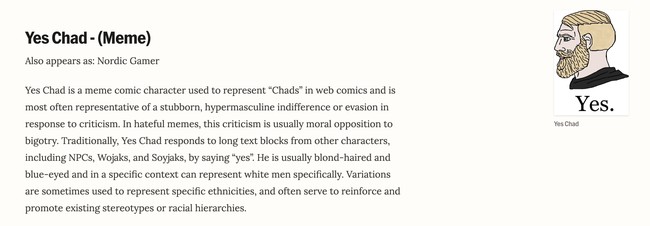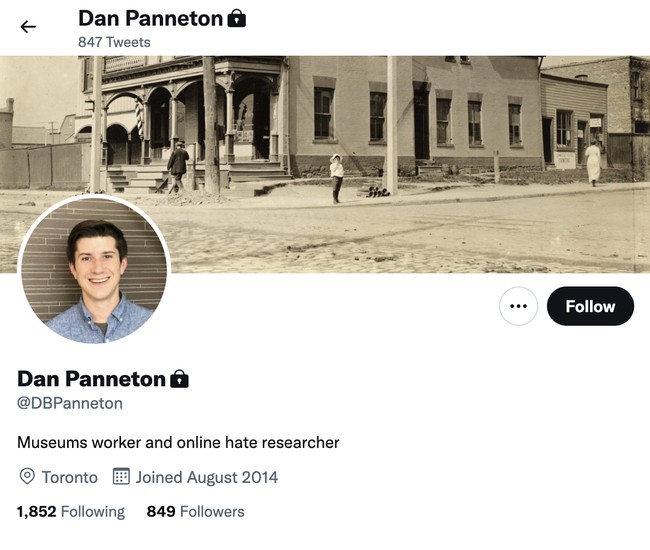The Atlantic contributor who authored a seething article ranting and raving about beads Catholics pray over, which the outlet's guest writer decries as increasingly symbolic of violent right-wing religious extremism, happens to be an "anti-hate researcher" whose field of interest is studying "hateful" meme culture.
Toronto-based writer Daniel Panneton, who wrote the lengthy op-ed originally titled "How the Rosary Became an Extremist Symbol" for The Atlantic, has made quite a career out of researching so-called "hate." In fact, Panneton is the manager of the Online Hate Research & Education Project (OHREP), an 18-month venture funded by a generous $340,000 grant from the Canadian government's Anti-Racism Action Program.

How is this Big Government money being spent? OHREP explores "how memes...are being used to spread hatred in Canadian contexts," using research to produce Hatepedia, which by November will contain Canada's "Hate Meme Database and Hate Symbol List," along with "lesson plans and educational resources designed to help educators mediate between hateful content and conduct, and their student's online experiences." OHREP's federal-funded work is "informed by a diverse Youth Advisory Council of high school students."
One of the five categories Panneton's team collects data under is the "Meme Characters With Hateful Uses" subsection, of which its fictional subjects are "not inherently hateful, but are sometimes used to spread hatred online, and often have origins in hateful spaces." Panneton's underlings have identified the mainstream GigaChad meme character, the personification of ultra-masculinity, as one that is used by "white supremacists" as an avatar for themselves, their movement, or "white men more generally." Similarly, the Yes Chad meme character symbolizes hypermasculine indifference to the outrage of Karens, liberal Internet activists, and other frontline actors of the woke mob seeking to control independent thinkers. "In hateful memes, this criticism is usually moral opposition to bigotry...Variations are sometimes used to represent specific ethnicities, and often serve to reinforce and promote existing stereotypes or racial hierarchies," the Hatepedia page reads.
Recommended

The melancholic Wojak meme character and its Soyjak counterpart, an emasculating caricature that mocks beta males and "simps" with a white-knight complex, were also named. The latter is found in forums and blogs of the "manosphere" promoting "toxic masculinity and misogyny," the Hatepedia site claims.
Panneton's anti-hate researchers also came for the often-used NPC (non-playable character) meme, an illustration used to portray herd mentality among self-styled SJWs who blindly support "the current thing." According to Panneton's research, "In hate speech, this intentionally dehumanizes the target" and in "far-right online spaces, NPCs are used to depict people who embrace progressive political beliefs..."
As for the not-yet-launched Hate Meme Database, which will be built with several thousand analyzed image macros and videos that "promote hatred towards identifiable groups," access will be by application-only and limited to "professionals and organizations," specifically researchers, academics, journalists, and educators
Not only is Panneton offended by memes, he seems to clutch his pearls at every current event in civil society.
A quick Google search shows that Panneton has written extensively for multiple Canadian and American publications, arguing "Why 'Canadian' shouldn't be an option on the census," how memes "normalize hate," and "The white-supremacist past—and present—of Canada's anti-abortion movement." In the aftermath of the leaked Dobbs decision, Panneton took aim at pro-life evangelical Christians, believing that "it's possible that anti-abortion politics could end up serving as an inroad to increasingly extreme worldviews, as far-right concerns about abortion are intimately connected to hateful positions on race, gender, and ideology."
It's no surprise that Panneton, too, went on a tirade against the month-long Freedom Convoy at the beginning of the year, which stood up to Canadian Prime Minister Justin Trudeau's pandemic-era authoritarianism. The assembly of anti-mandate truckers included a "radicalized" array of "conspiracy theorists, antisemites, Islamophobes and other extremists," according to Panneton's characterization of the peaceful protestors.
Two of the only reported incidents of violence were by bad actors and government enforcers: an Indigenous elder using a walking device was trampled by Trudeau's forces on horseback plus a purpled-hair pyromaniac and his masked co-conspirator set fire to an Ottawa apartment. Ottawa Police determined that there was no evidence the arsonists were "involved in any way" with the Freedom Convoy and a leaked Royal Canadian Mounted Police (RCMP) chat showed that the mounties were elated at the use of force against the protestors: "Just watched that horse video - that is awesome!! We should practice that manoeuvre [sic]."
In late March, the 1st arson suspect was charged.
— Mia Cathell (@MiaCathell) April 7, 2022
Ottawa Police also determined then there was "no information indicating MCDONALD was involved in any way with the Convoy protest which was going on when this arson took place."https://t.co/2IJCXAv83C
Panneton even had the honor of providing witness testimony back in April to the Standing Committee on Canadian Heritage to discuss the "History of and Current Display of Hate Symbols and Emblems in Canada."
There, he pointed to the "OK hand gesture" and the "Honk Honk" meme that circulated during the height of the pro-freedom demonstration on Parliament Hill in downtown Ontario. Panneton cited the viral moment when Liberal MP Ya'ara Saks claimed on the House of Commons floor that "Honk Honk" is acronymic code for the phrase "Heil Hitler," during her shameless defense of Trudeau's unprecedented invoking of the Emergencies Act to crack down on the citizen uprising. Saks later cited an Antifa member, another self-proclaimed expert on the far-right, who asserted that honking at the Freedom Convoy is "a very loud Nazi dog whistle."
(A great-grandfather, standing less than 5-feet tall and wearing pajama pants at the time, was wrestled to the ground and handcuffed by Ottawa police for honking his car horn in support of the Freedom Convoy. "It's an offense to beep your horn," an arresting officer said of the elderly man's supportive honking.)
— Ya'ara Saks ???? ??? (@YaaraSaks) February 22, 2022
Panneton also mentioned the sight of the Confederate flag carried at the Freedom Convoy, although in the one documented instance, demonstrators quickly confronted the flag-bearing masked man—believed to be a plant embedded as a provocateur among the protestors—and ordered him to leave the scene. "Now he's going. We called him out...He's gonna hold his head in shame now," one of the rally-goers said in a video that captured the exchange. Supporters pointed out that the anti-masking attendees would not wear a face covering.
Confederate Flag provocateur called out at Truckers Freedom Convoy. If attendees are all so called “anti-maskers” and “anti-vaxers” why does he not show his face like others here?
— Rowan (@canmericanized) January 30, 2022
Can’t have it both ways. pic.twitter.com/DzkQvLuOjf
So, of course this "anti-hate expert"—the epitome of liberal academia—bristles before the rosary. Panneton has since locked down his Twitter account after facing relentless online backlash for publicly espousing anti-Catholic hatred. In the hit piece on Catholicism, he declares that the rosary, a common sacred object used every day by followers of the Catholic Church, has "acquired a militaristic meaning for radical-traditional (or 'rad trad') Catholics." Panneton states that "rosary-as-weapon memes" serve to "integrate ultraconservative Catholicism with other aspects of online far-right culture," and although the "phenomenon might be tempting to dismiss as mere trolling or merchandising...the far right's constellations of violent, racist, and homophobic online milieus are well documented for providing a pathway to radicalization and real-world terrorist attacks."
"The rosary—in these hands—is anything but holy," Panneton concludes. An animation of bullet holes forming the shape of a rosary was the feature imagery at the top of Panneton's article before The Atlantic's damage-control cleanup crew stealth edited both the headline and the visual without leaving an editor's note.
No editor's note pic.twitter.com/SxWsff6Jpd
— Mary Margaret Olohan (@MaryMargOlohan) August 15, 2022
Panneton's demonization of the Catholic faith via disparaging the scripture-based prayer practice performed by nuns and school-aged children in CCD classes alike comes as the pro-abortion Left continues to downplay and dismiss the firebombing and widespread vandalism of pro-life churches and pregnancy centers.


























Join the conversation as a VIP Member